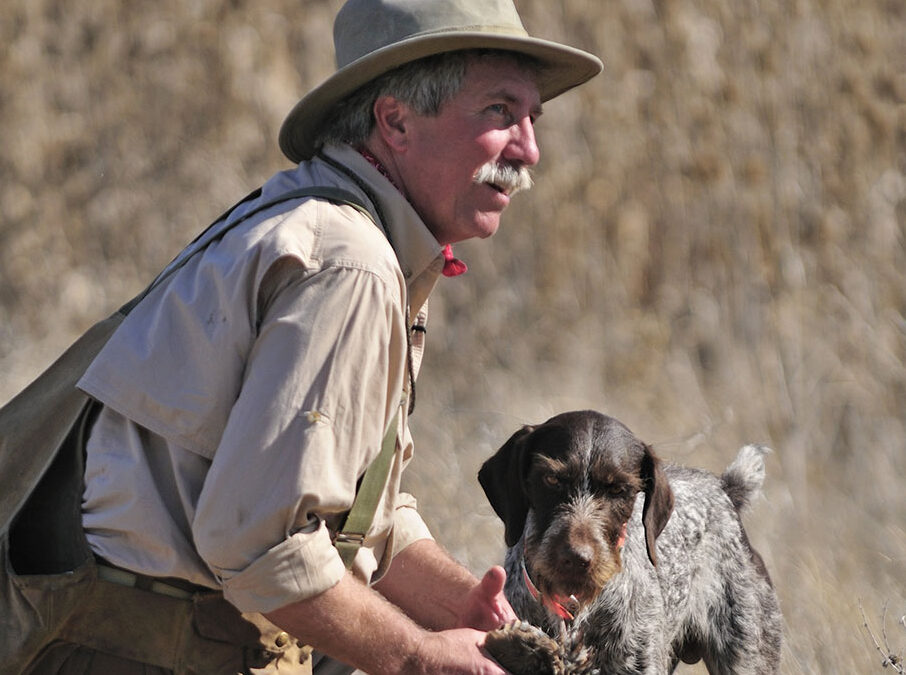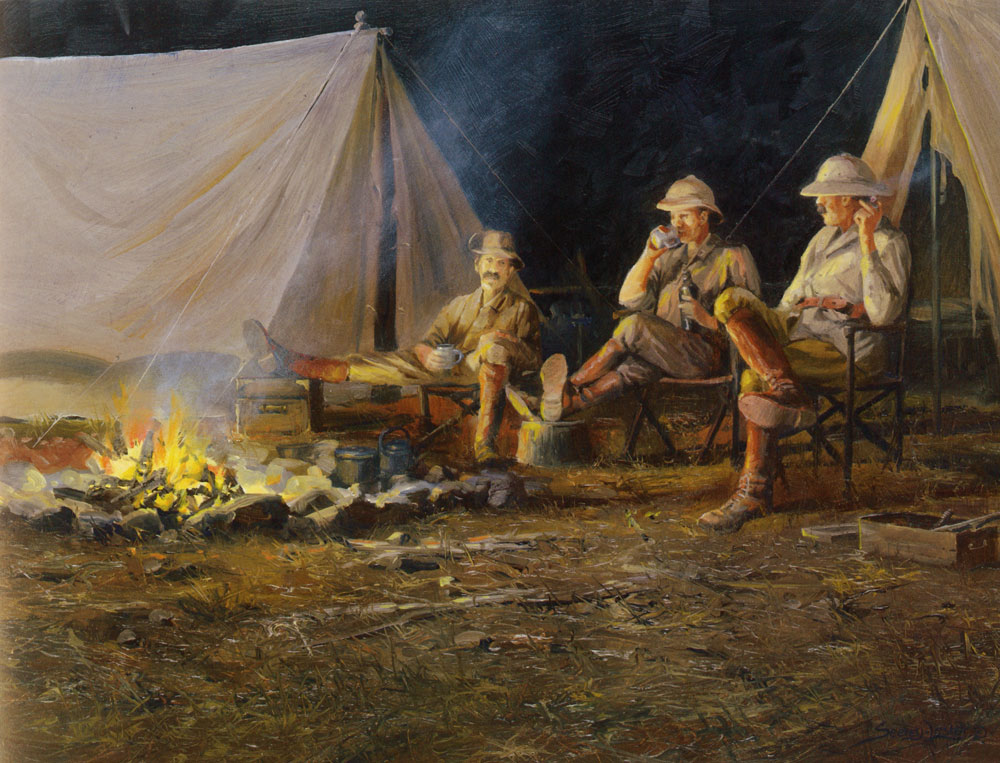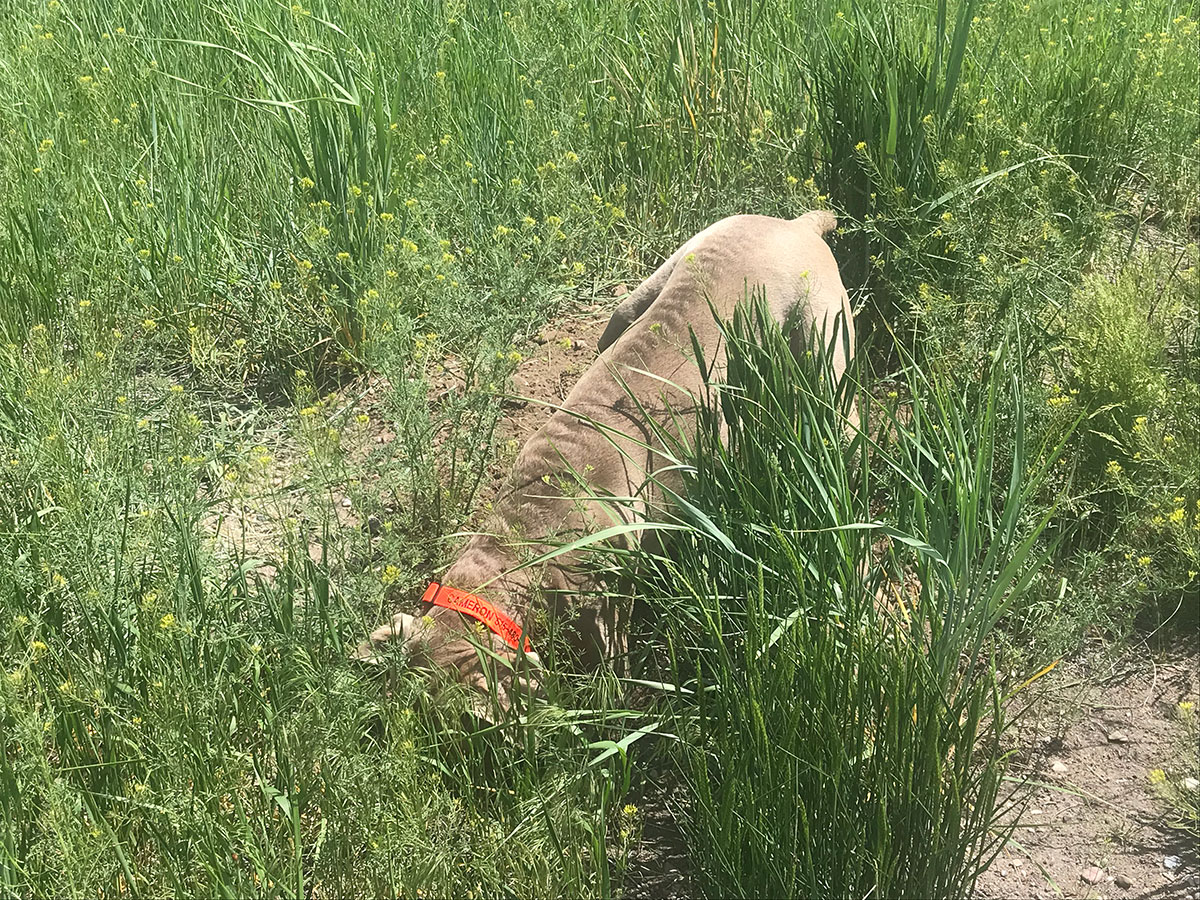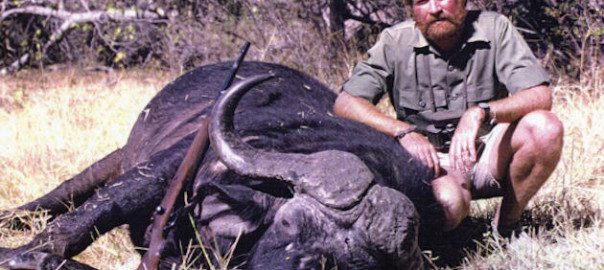There are plenty of canine rock stars, field trial money-makers, legendary bird dogs memorialized in literature, magazine stories and on hall of fame walls. But I’m a man of simple tastes, so those dogs that do yeoman’s duty are the ones that nudge their way into my heart. To me, they’re some pretty good dogs.
It’s not the stuff of blue ribbons and podium appearances; rather, it is subtle, indefinable traits that get him invited to ride shotgun and share our couch. They are most evident in those quiet moments where the bond is forged between human and canine.
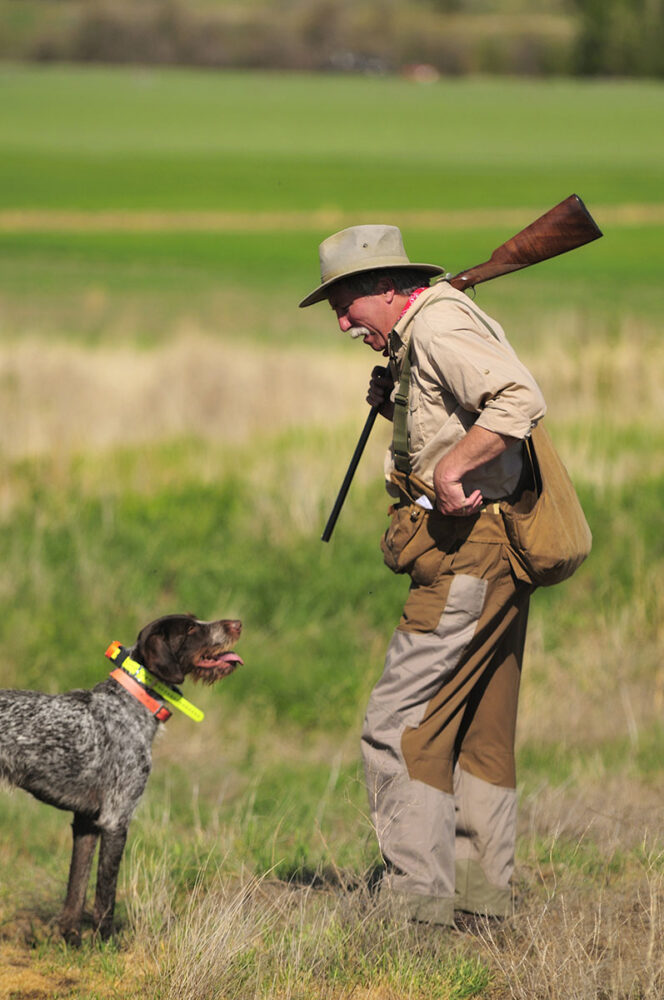 “Finished” or not, pure-bred gold or a backyard breeding, dogs find their spot in our lives by various routes. To hunters, the primordial link between two predators is foremost. To feed the tribe we become of one mind, dancing a pas-de-deux that is millennia old. With the hunt as our stage, drama and comedy, life and death unfold. And we are richer for it.
“Finished” or not, pure-bred gold or a backyard breeding, dogs find their spot in our lives by various routes. To hunters, the primordial link between two predators is foremost. To feed the tribe we become of one mind, dancing a pas-de-deux that is millennia old. With the hunt as our stage, drama and comedy, life and death unfold. And we are richer for it.
Facebook is full of brags and tailgate body piles, human braggadocio and bluster. Sometimes, the dogs get passing credit for the hunt’s success. Other times the dog must wait until the drive home, or later, for recognition of their crucial role. Some are lucky if they get a warm place to sleep that night because, after all, “they’re just dogs.”
This is for all of them–the unsung heroes of the hunt that will never be on a magazine cover; dogs that live to hunt and hunt to live. Each has earned a place in my memory. While they may not be, as author Roger Karas said, our whole life, they absolutely make our life whole. These are some pretty good dogs. Now…
Let’s go hunting.
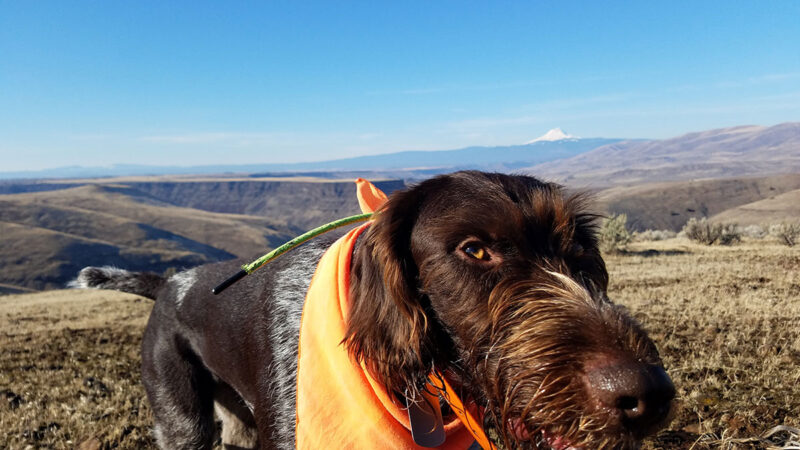
Among a moonscape of cliffs and gorges, razor-sharp boulders and sheer drops, we hunkered under a ledge of lava frozen to stone 100,000 years ago, while rain splattered on a landscape of sage and cheatgrass. Our dogs shivered between us, one a wirehair of noble lineage, the other may have been plucked from a cardboard box at a grocery store. Half yellow Lab and half Brittany, Missy resembled a diminutive version of the retriever side of her DNA. As we looked longingly in the direction of my truck, a lone chukar lost its nerve and flushed from the nook above us.
Two shots punched through the deluge and a bird tumbled into the muck 300 yards away. Both dogs forgot their misery and streaked for the bird. Missy arrived first, scooped up the partridge and froze. Dave shouted and she began her uphill slog, bumping into boulders enroute. She paused again, then trotted away from us toward a rocky precipice. Another shout–almost scream–and she reversed field, cat-dancing in the other direction until halted by a screech from her owner as she neared another drop-off. Whistles, shouts, each agonizing step gradually vectored her away from danger, up the slope and, after an eternity, back to our shelter. As she took those last, delicate strides we saw her eyes covered by a chukar wing. She was essentially blindfolded, trusting her master to guide her amid cliffs and boulders with nothing but his voice.
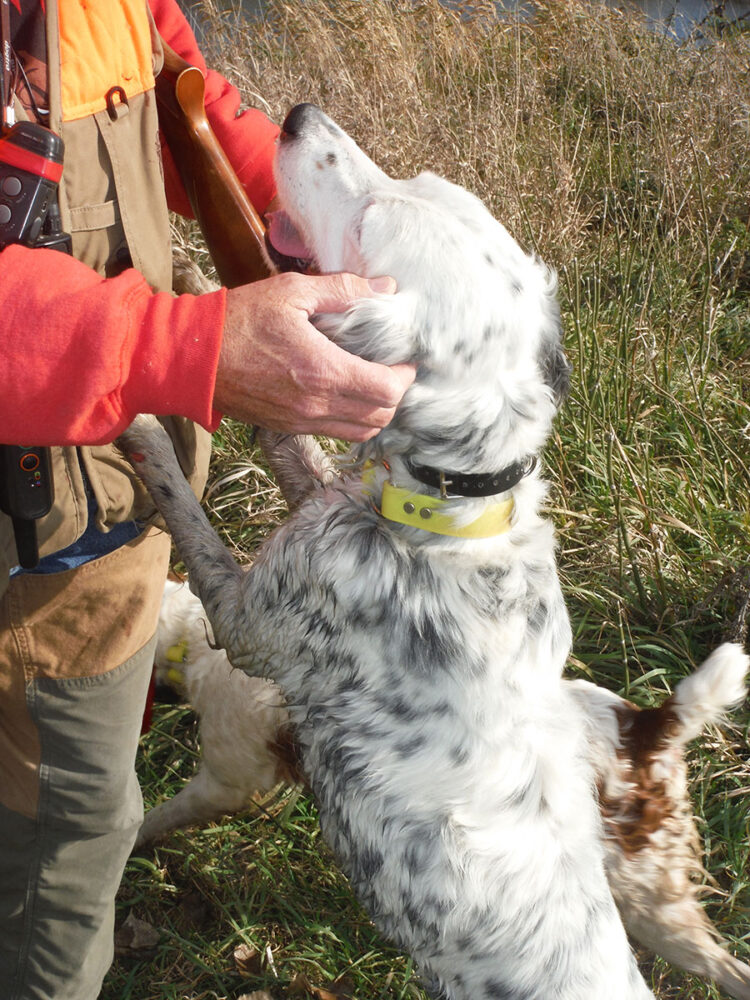 That may have been her most vivid performance, but over the years that pocket rocket has emerged bleeding from berry thickets after putting up quail no other dog would chase. She’s pursued wounded honkers as big as her and brought them to hand, survived rattlesnake bites and porcupine quills, hunting with Dave until she was 15 years old. That’s my kind of bird dog.
That may have been her most vivid performance, but over the years that pocket rocket has emerged bleeding from berry thickets after putting up quail no other dog would chase. She’s pursued wounded honkers as big as her and brought them to hand, survived rattlesnake bites and porcupine quills, hunting with Dave until she was 15 years old. That’s my kind of bird dog.
On the banks of Montana’s Bighorn River, it was single malt time. I was touring the lodge kennel (where the residents are often more fascinating than those around the dining table). A young shorthair met my gaze from the back of his cubicle. Not fear, nor curiosity, just a cordial, professional greeting between hunters. Newly arrived, he’d been called up to the majors after the lodge’s star player was injured. I asked to hunt with him in the morning.
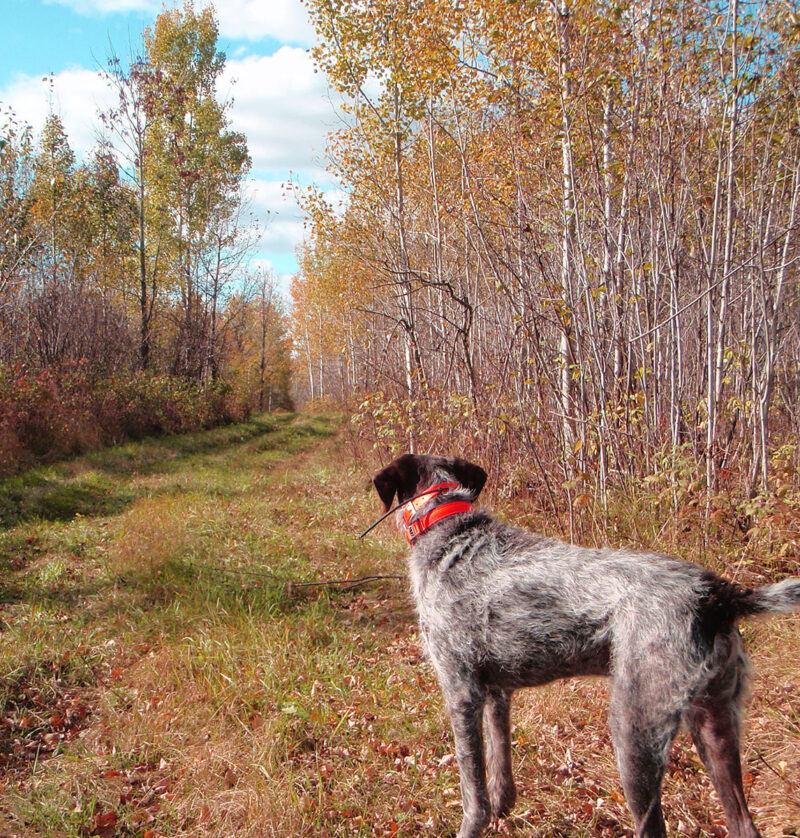 Young dog, new owner, new country and a TV crew to boot, Duke quartered the fields and snuffled the creek bottoms, every ounce of DNA focused on his primeval objective—game. All legs and gangly, then elegant and graceful, he showed us in dribs and drabs how he’d hunt when mature, putting together all the pieces of the puzzle just once at the end of the day with a point, hold and even a retrieve. He won my heart with his unique mix of stoicism and dignity, puppy antics and promise. He matured into the lodge manager’s personal dog, for good reason.
Young dog, new owner, new country and a TV crew to boot, Duke quartered the fields and snuffled the creek bottoms, every ounce of DNA focused on his primeval objective—game. All legs and gangly, then elegant and graceful, he showed us in dribs and drabs how he’d hunt when mature, putting together all the pieces of the puzzle just once at the end of the day with a point, hold and even a retrieve. He won my heart with his unique mix of stoicism and dignity, puppy antics and promise. He matured into the lodge manager’s personal dog, for good reason.
Got one? Then you already know we can learn a lot from a dog if we pay attention. If you aren’t already owned by a bird dog, perhaps some day you will know. Enthusiasm for the job at hand, for example. Living in the moment, savoring the simple things, yielding to natural forces. Those lessons help us, somehow, somewhere, in this crazy world. Thankfully, a dog translates for us the language of the wild, primitive world we explore with them. They are master hunters compared to us pitiful apprentices.
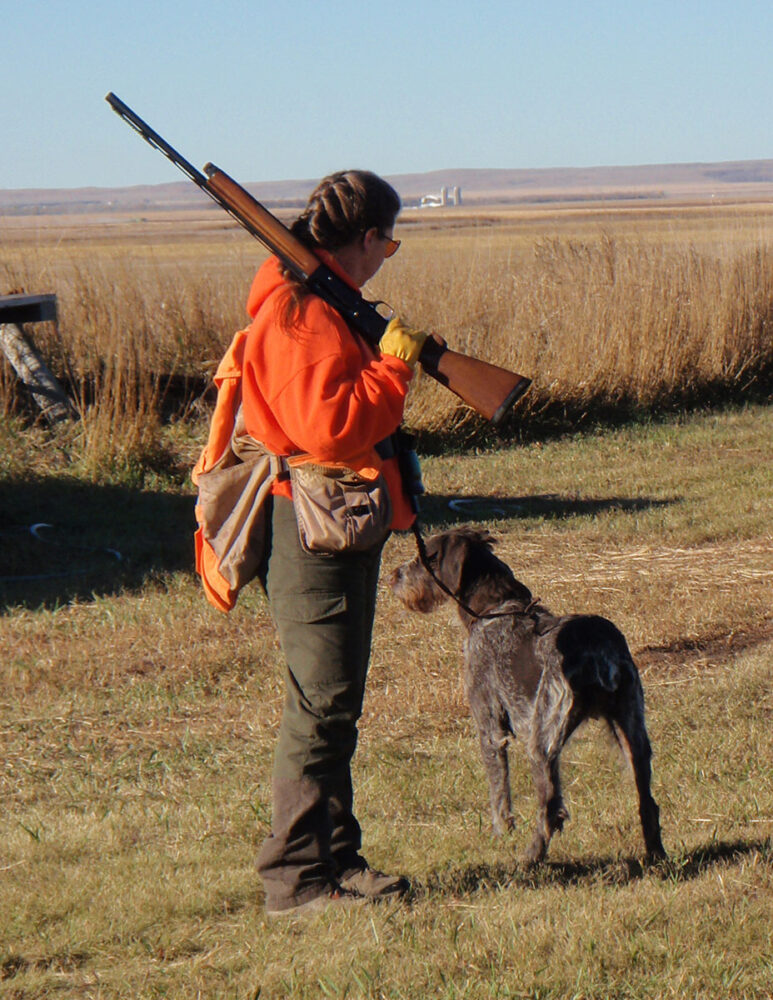 But that’s not all. What animal better demonstrates joie de vivre than a hunting dog? One boisterous wirehair was a caricature—beard, bushy coat and Groucho Marx eyebrows. At the shot, he was all-in, a streak across a pool-table-flat prairie until he rolled like the cartoon coyote, foiled once again by the roadrunner. He came out of that dust cloud with the dead ringneck in his mouth, none the worse for wear and looking for all intents like he was waiting for a sound effect and applause.
But that’s not all. What animal better demonstrates joie de vivre than a hunting dog? One boisterous wirehair was a caricature—beard, bushy coat and Groucho Marx eyebrows. At the shot, he was all-in, a streak across a pool-table-flat prairie until he rolled like the cartoon coyote, foiled once again by the roadrunner. He came out of that dust cloud with the dead ringneck in his mouth, none the worse for wear and looking for all intents like he was waiting for a sound effect and applause.
In Wisconsin’s deep woods, a petite shorthair perfectly understood ruffed grouse. We ultimately understood her. Bell silenced, we would search diligently for her locked somewhere on a grouse. After a polite interval, she would daintily back out of her point, circle back and guide us to the bird, where she would resume her pose and wait for someone to put the bird in the air. No, you can’t make up this stuff.
But it’s not about pedigree. He was a mutt, Ruger was, half-shorthair and half-wirehair, and if not for a soft-hearted guide probably would have endured a short, miserable life. I believe dogs know when their lives have been spared by some clumsy human with more compassion than sense. Those dogs will go to the ends of the earth for their savior. Ruger did. Lava rock like knives on his feet, blackberry thorns ripping at his flanks, nothing kept him from his duty to find and retrieve birds. He pulled out a toenail digging one chukar from a boulder field. In return, he knew at the end of the day there would be TLC and a comfortable bed, soft words and gentle pats. I hope I am as kind to my dog.
We joke about dogs’ ability to judge character in a person, and once in Kentucky I learned that lesson. A trio of prized pointers vacuumed the habitat, delivering to the guns a regular procession of hard-flying bobwhites and posing on each find like the subjects of a painting.
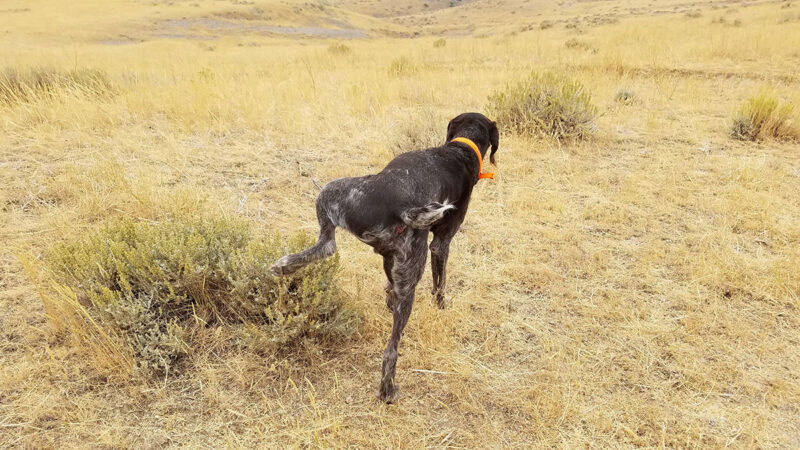
I wasn’t on my “A” game, sinking to the middle of the alphabet with dismal shooting. Point and miss, ad infinitum. When a bird finally fell to the crack of my gun, it fell in dense cover. Any bird I hit is a trophy, worthy of concentrated effort to get it in the bag. To help mark the spot where it fell I tossed my hat on the ground. We brought the dogs over and commenced a search but not before the boss pointer of the string made known his feelings about my shooting accuracy by lifting his leg on my hat. Well played.
Before there were streets, there were “street smarts,” and dogs pioneered them. Training them is, essentially, discouraging that natural instinct. But at times, why not allow it to flourish? A flashy Brittany was dispatched to a field of standing corn–often a recipe for disaster. Birds ran, flew and clucked pheasant pejoratives at us. According to the experts, if a dog actually locates a bird in such cover, it should remain staunch, pointing where the ditch parrot used to be as it skulks down the row, unmolested. This Britt tracked head down in 4WD low, ghosting to a bird so stealthily the ringneck would freeze in surprise, allowing us time to catch up and make the shot. Field-trial bluster is one thing, getting the job done, another.
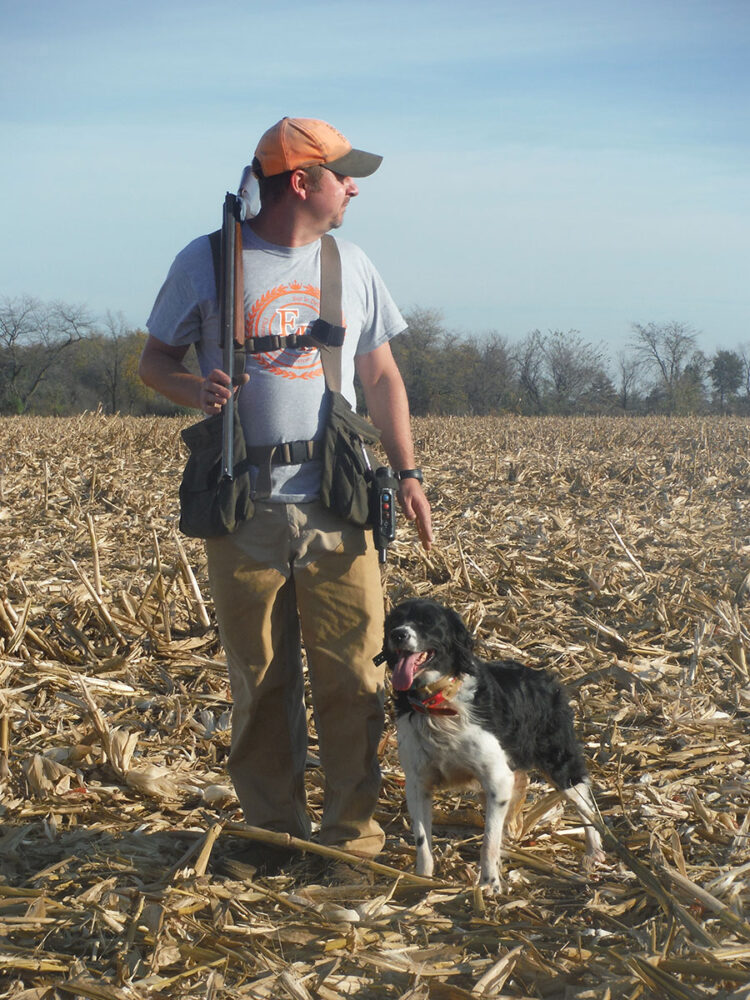 “Pointers don’t swim” is a bird-dog axiom that, like rules, are made to be broken. One flashy young dog snuffled ground scent most of the way around a Kansas stock pond, humans watching the show from a high spot. When the pheasant snuck onto a long peninsula, we hustled into gun range–game on. At the spot where land ran out and water began, the bird erupted from tall grass, falling after a fusillade into the middle of the pond. High fives were interrupted by a splash as we watched a wide-eyed pointer realize she was swimming like Michael Phelps only when halfway to the bird.
“Pointers don’t swim” is a bird-dog axiom that, like rules, are made to be broken. One flashy young dog snuffled ground scent most of the way around a Kansas stock pond, humans watching the show from a high spot. When the pheasant snuck onto a long peninsula, we hustled into gun range–game on. At the spot where land ran out and water began, the bird erupted from tall grass, falling after a fusillade into the middle of the pond. High fives were interrupted by a splash as we watched a wide-eyed pointer realize she was swimming like Michael Phelps only when halfway to the bird.
Mousy brown and a little tubby, this Griffon should be issued a lunchbox for his workmanlike performance. (He did have a blue collar.) Unassuming and distinctly un-glamorous, he pointed so subtly you’d think he was just waiting for us to catch up before waddling onward. Once a shot bird hit the ground, though, he’d dash to scoop it up and take a victory lap, head high and prancing like a derby winner.
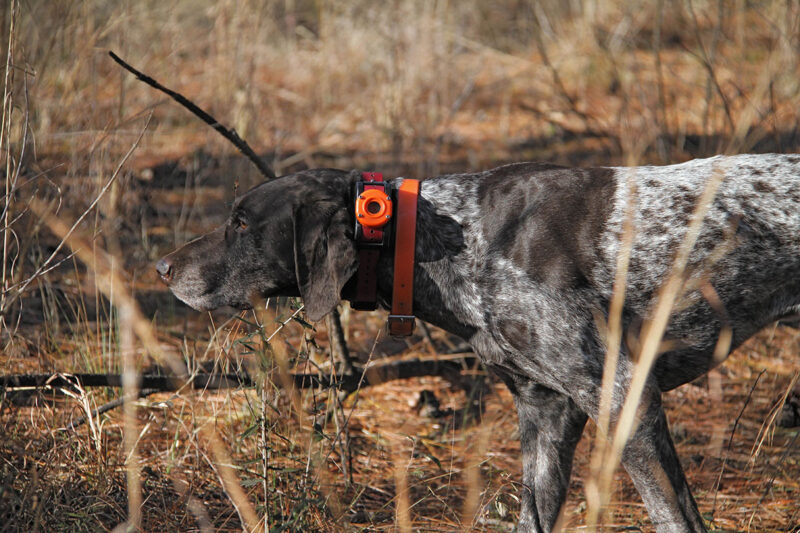
“The heart of a lion,” is how one hunter described Sprig, a delicate field-bred cocker spaniel. On the small side of a small breed, she had a strong nose and oversized attitude. Her owner said “she’s wearing some blood at the end of every hunt.”
What Makes for some pretty good dogs?
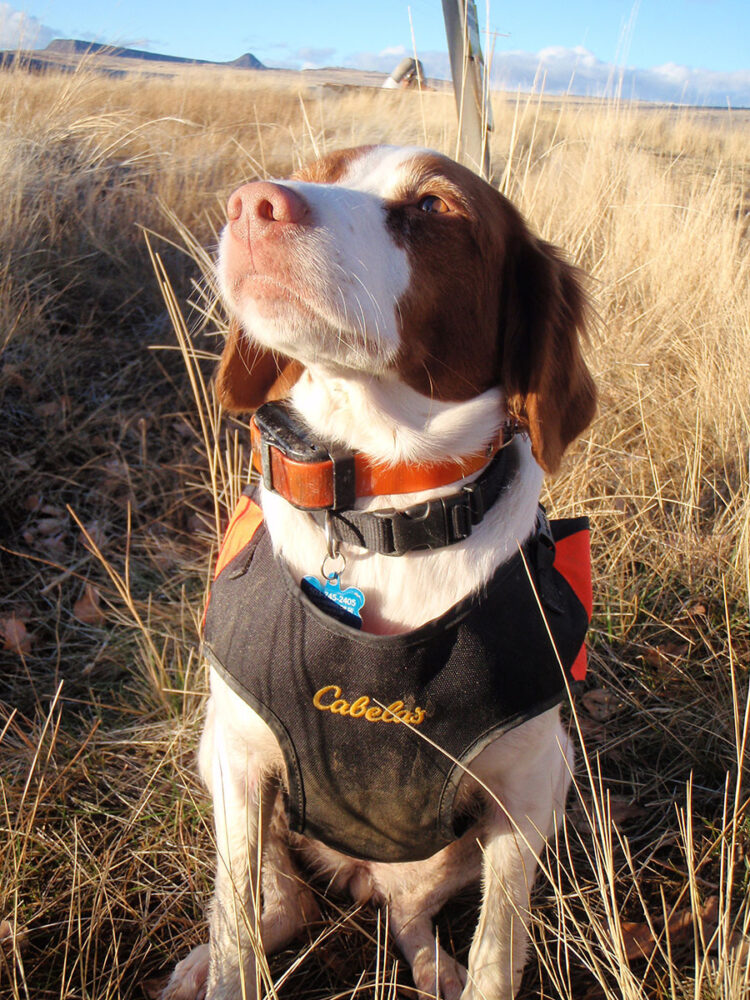 The debate is eternal—which is better, an “outside” dog or one that lives with its owner? Sprig is the poster girl for the latter. The bond between man and dog forged from constant contact is evident in the way her owner speaks of his hunting partner, a breed many believe too delicate for the 50 days they hunt every season. The breed may be compact, but in that tiny chest beats an oversized heart.
The debate is eternal—which is better, an “outside” dog or one that lives with its owner? Sprig is the poster girl for the latter. The bond between man and dog forged from constant contact is evident in the way her owner speaks of his hunting partner, a breed many believe too delicate for the 50 days they hunt every season. The breed may be compact, but in that tiny chest beats an oversized heart.
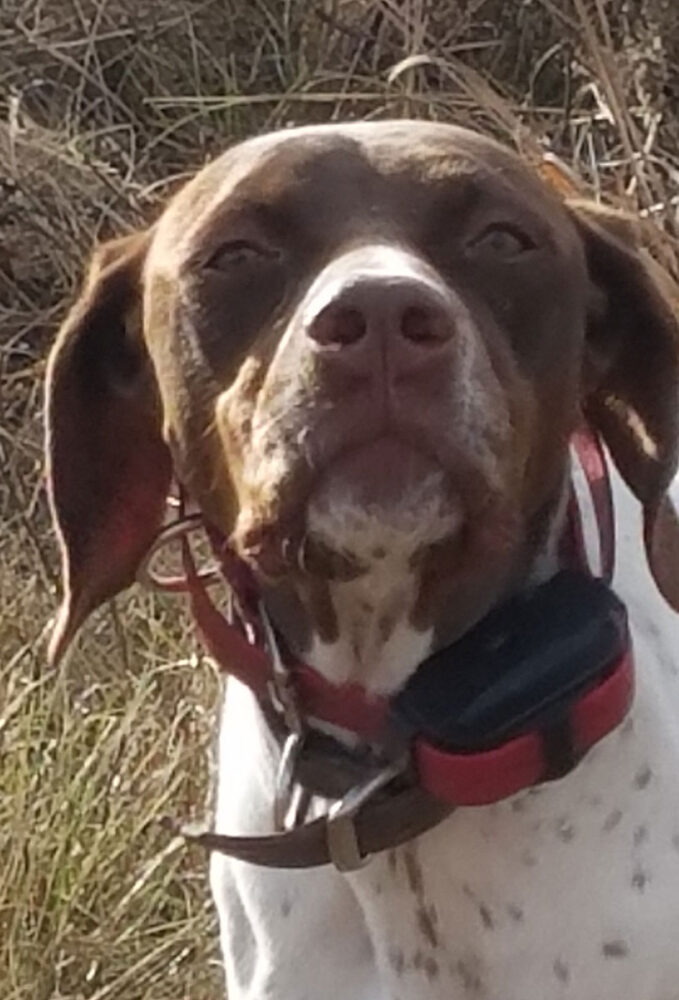 Some dogs are professionals, working for hire and their guide-owner. Ace worked birds for 15 years, described by his owner as a “borderline psychopath” for his devotion to the hunt. A career of over 9,000 retrieves, this Labrador once brought back 240 ducks in a single day.
Some dogs are professionals, working for hire and their guide-owner. Ace worked birds for 15 years, described by his owner as a “borderline psychopath” for his devotion to the hunt. A career of over 9,000 retrieves, this Labrador once brought back 240 ducks in a single day.
Maybe you’ve heard this before: “The two of us know what each other are thinking. I couldn’t have drawn up a blueprint for God to make a dog as good as him,” owner Pat Pitt said. Ace was also “like a kid at Christmas” before a hunt. Are we anthropomorphizing here? Hell yes we are, and we will until there are no more dogs. Then, we’ll reminisce.
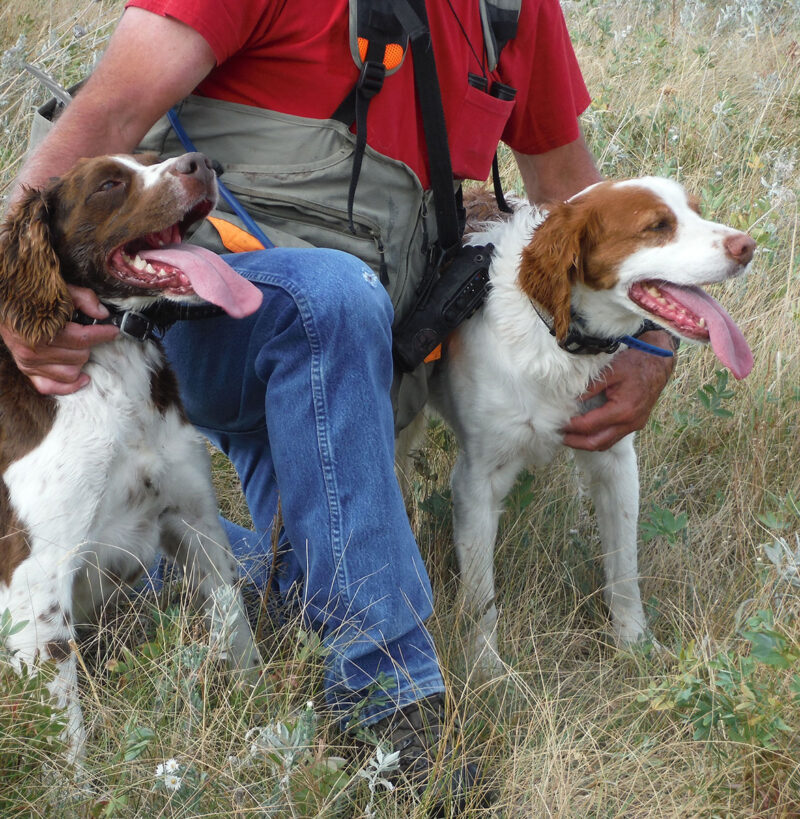
Yes, I’ve been privileged to hunt with world-class field trialers, and I’m humbled by the opportunity. But most dogs are more earnest and less polished, but so are we, right? One diminutive setter streaked across short prairie grass until encountering scent, when she’d skid to a stop, quivering. The essence of all hunting dogs was distilled into that vibrating body, bursting into a celebration of nuclear fission as she raced for shot birds. Her “drive-by” retrieves would offend purists, but I saw them as the manifestation of her unbridled desire to find more-more-more birds. That evening in the lodge, she slept the sleep of the righteous knowing that no dog could have given more than she had.
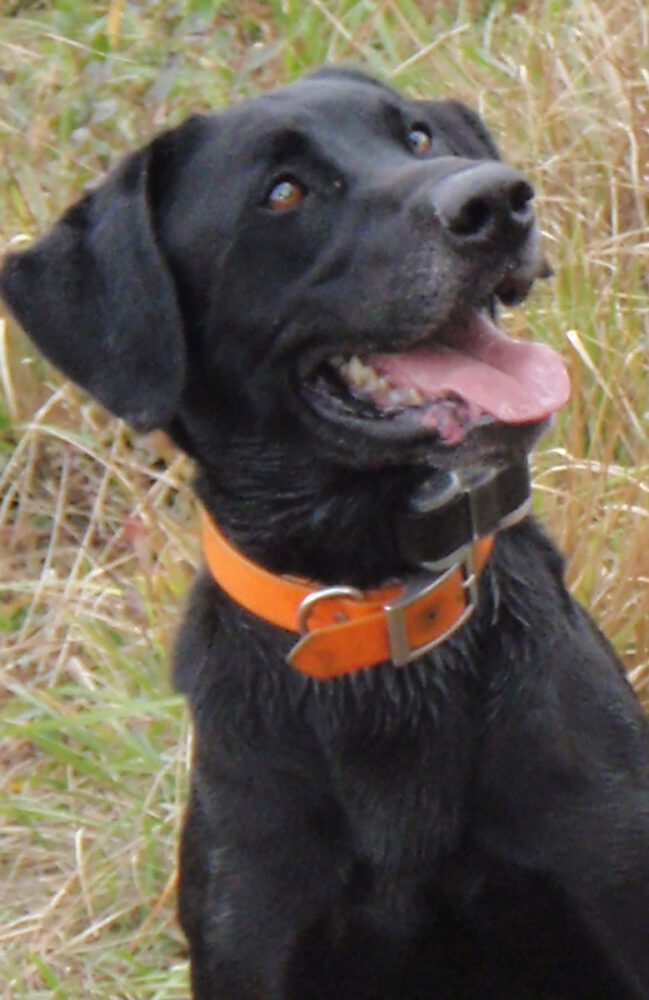 The primitive link human and canine was evident on one Kansas pheasant hunt. The pointer jinked and juked as if his handler had a joystick in his lap. Mark would nod his head, make a sideward glance and the dog would arc toward the next objective. It was an intricately choreographed number where only the two participants could hear the music.
The primitive link human and canine was evident on one Kansas pheasant hunt. The pointer jinked and juked as if his handler had a joystick in his lap. Mark would nod his head, make a sideward glance and the dog would arc toward the next objective. It was an intricately choreographed number where only the two participants could hear the music.
In California, one wizened Griffon had cracked the code, turning that mind-meld into a symphony of men, guns and birds. Shots rang and quail fell.
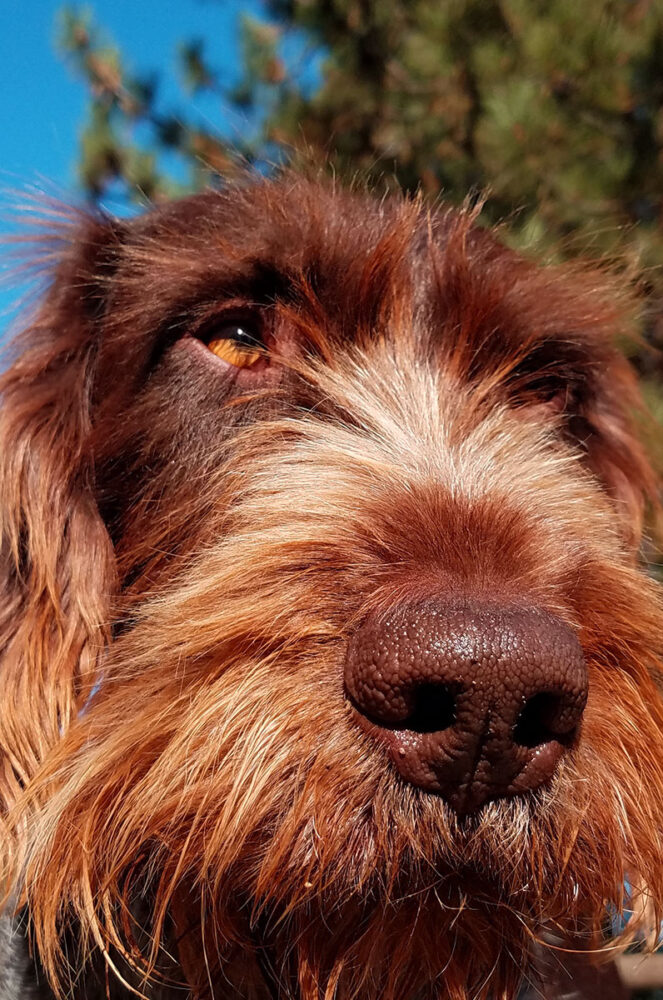 A shorthair named Scratch hunted with abandon, long legs reaching, always reaching for the ends of the earth in service to his owner. He’s a three-ring circus of trips, stumbles, cuts and head-bumps. He does his best work when going off the rails. Once, it nearly cost him his life.
A shorthair named Scratch hunted with abandon, long legs reaching, always reaching for the ends of the earth in service to his owner. He’s a three-ring circus of trips, stumbles, cuts and head-bumps. He does his best work when going off the rails. Once, it nearly cost him his life.
Run over by a Jeep, his entire front leg was peeled of skin. He was lucky to have a wonderful owner and skilled veterinary surgeon. I was there the day of his comeback, 100 stitches and six weeks later. Scratch peed on the truck tire then bolted toward a scrubby patch of loblolly pine. Scars were fading, but was his spirit healed? The quivering point was one indicator. Then, he leapt skyward, reaching for what, a star, the sun? Just a chittering bobwhite this time, but muscles, bones, skin, tendons and hunter’s heart functioned as their maker intended. Not “finished” hunting dog discipline, but a bold statement: Scratch was back.
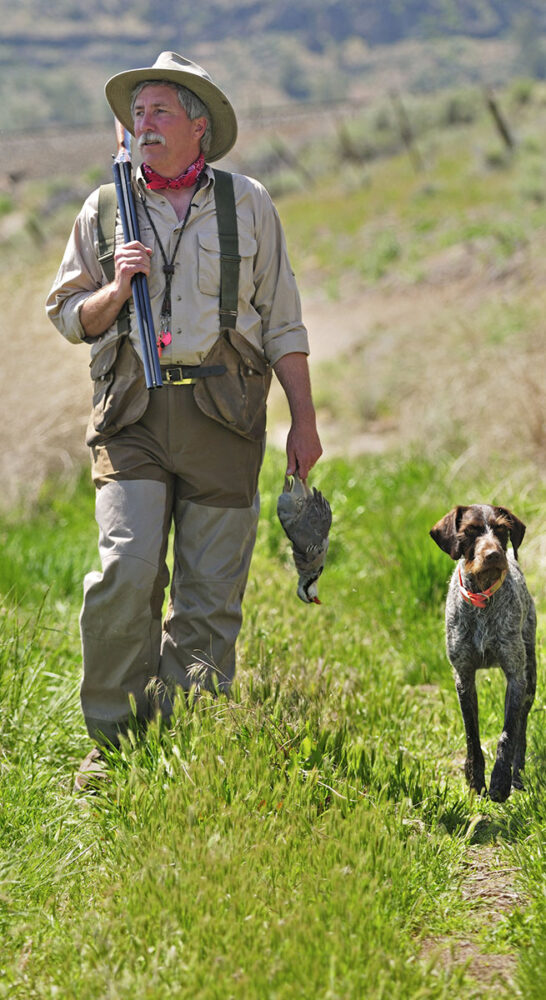 What is the secret sauce? There is no single recipe. Each dog, each human, assembles a mélange of ingredients when the tailgate drops, then hopes for a puff of magician’s blue smoke to appear in the field. We go into the field with hope, fear, humility and too much adrenaline. We trust our dogs to manifest their genetic destiny and put us into birds, then hope to fulfill our half of the transaction.
What is the secret sauce? There is no single recipe. Each dog, each human, assembles a mélange of ingredients when the tailgate drops, then hopes for a puff of magician’s blue smoke to appear in the field. We go into the field with hope, fear, humility and too much adrenaline. We trust our dogs to manifest their genetic destiny and put us into birds, then hope to fulfill our half of the transaction.
If there is a commonality among the dogs that dazzle me–and perhaps you–it may be an apparent satisfaction with their lot in life, recognition of where they fit in the world. They do their part, made whole by their work and undeterred by human-defined shortcomings. They are living their destiny.
And if we pay attention, maybe we can, too.
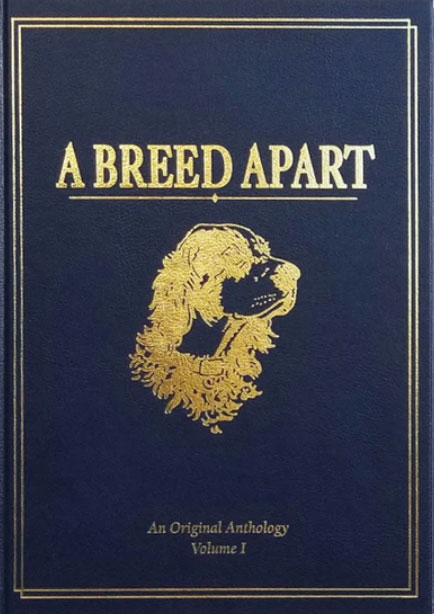 Anthology featuring some of the finest contemporary sporting writers: George Bird Evans, Charles Waterman, Gene Hill, Michael McIntosh, Jim Fergus, and many others. Each offers a story of his singular relationship with the dog (or dogs) that shaped his life. Buy Now
Anthology featuring some of the finest contemporary sporting writers: George Bird Evans, Charles Waterman, Gene Hill, Michael McIntosh, Jim Fergus, and many others. Each offers a story of his singular relationship with the dog (or dogs) that shaped his life. Buy Now

